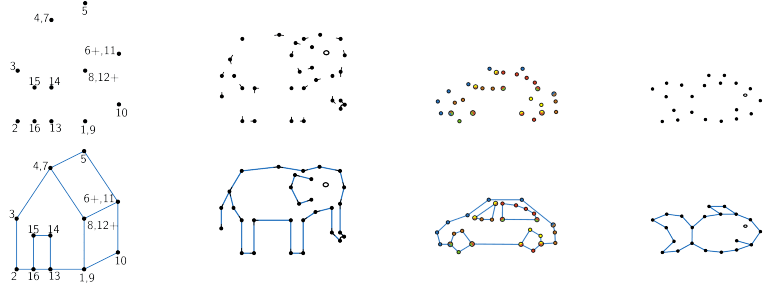Connect-The-Dots

Despite the advance of technology, pencil-and-paper puzzles are still extremely popular, even in mobile apps (which may simulate the behaviour of paper). One such puzzle is the classic “connect-the-dots” puzzle, in which a sequence of dots should be connected to form a picture. Such puzzles are still created manually, as the process is hard to automate: the intrinsic geometric and artistic components call for special attention.

We identify three criteria for a good connect-the-dots puzzle. First, the unsolved puzzle should not reveal the final image (obfuscation). Second, the puzzle should have a unique solution, and no near-solutions (non-ambiguity). Third, the solved puzzle should look like the input image (similarity). We modelled these criteria mathematically, and developed algorithms to optimise them. We implemented these algorithms and generated several puzzles.

